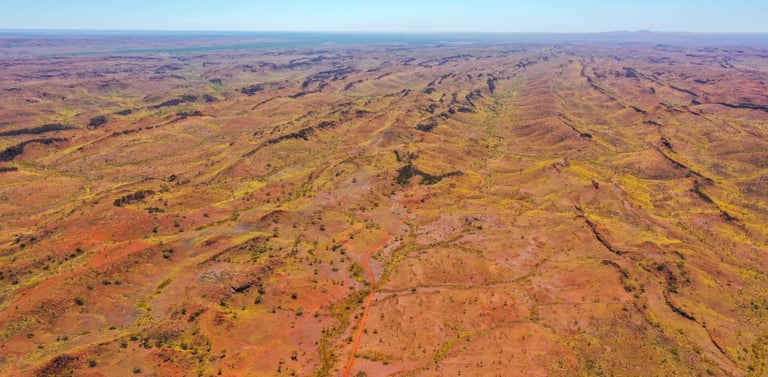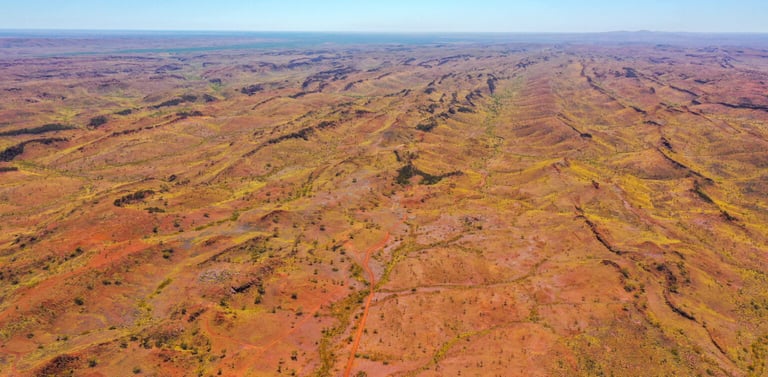Alien Metals Limited (LON:UFO) Non-Executive Technical Director Rob Mosig caught up with DirectorsTalk for an exclusive interview to discuss his appointment, independent review conducted at Pinderi Hills, whyGeoscience Australia highlighted this area, their Elizabeth Hill & Munni Munni projects, and plans for the company going forward.
Q1: Rob, let’s start with yourself. You recently came onto the team at Alien Metals as a Technical Director. Why have you done that and what opportunities are you most excited about going forward?
A1: Look, by training, I’m a humble geologist. Now, with over 40 years technical and corporate experience, I have always followed the specialty in precious metals, and minerals such as gold, platinum group metals, silver, diamonds. I focused on these ones because I found they’re fascinating in their genesis and I’ve spent a lot of time in the Pilbara region of Western Australia, because that’s my belief that the next major repository for silver, platinum group metals, and indeed lithium, will come from this locality.
Of particular relevance to Alien Metals is the fact that I know I’ve got a good comfortable knowledge on the Munni Munni project, which is part of Pinderi Hills, and I got that from when I ran a company years ago that had a joint venture with the Lonmin Group, the platinum explorers on the Bushveld in South Africa.
I think that these sort of prerequisites got me a guernsey in Alien.
Q2: The company recently announced to the market an independent review was conducted at Pinderi Hills. Can you explain in detail the independent review and why it was conducted now?
A2: Pinderi Hills is very nearby to our flagship iron ore project in the Pilbara, it’s more towards the coast. It covers some 180 square kilometres of highly significant ground that hosts a platinum group metal. It already hosts a platinum group metals resource, found in the early 80s and a first resource was identified in 2000 as having 24 million tonnes, a tad under 3 grams per tonne platinum group metals plus gold.
One and a half kilometres just to the north of the Munni Munni deposit is a historic silver mine that was mined just for two years and in that two years, it produced 1.1 million ounces of silver. At the time that the mining took place for the silver, silver was $5 an ounce, and it’s now six times that at least. To make their money in those days, they sold the silver nuggets and avoided looking at the lower grade material, because it warrants a higher price, they sold those silver nuggets and managed to make some money. Having said, the platinum and silver, there’s a sequence of pegmatites throughout the area that have super opportunity for lithium and we have a joint venture partner that is working on that right at the moment.
In addition, in that same 180 square kilometres of Pinderi, we’ve got a nickel and copper potential that we’re also looking at so the independent review looked at all of those issues.
Just to put one final thing into focus, the Munni Munni intrusion is five kilometres thick, and it hosts two kilometres of ultramafic rocks. These rocks, the ultramafic, are the great potentials for platinum group metals, gold, and of course, nickel and copper.
So, that’s why we’re so excited with that area and why we conducted a review.
Q3: Why has Geoscience Australia highlighted this area as having a high potential for intrusion-hosted Ni-Cu-PGM sulphide deposits?
A3: Indeed they have. The government has identified this way back in the 80s as one of the largest intrusions in Australia, Munni Munni intrusion in the Pinderi hills. It’s 250 square kilometres in area and as I mentioned, it’s got a thickness of five kilometres, having two kilometres of ultramafic.
So, in terms of uniqueness, this one is a unique, large, ultramafic igneous intrusion. Not as big as in the Bushveld, which is much larger, but as we all know, the mining there is coming to greater depths for platinum group metals, and it’s also costing a lot more in energy costs over there. So, the search is on to find something out of South Africa, where 75% of the platinum group metals are produced and Australia hosts these potentially similar deposits and Munni Munni in Pinderi hills is one of the largest in Australia.
Q4: You were quoted as saying: “The Company has fast-tracked plans to develop the Elizabeth Hills silver mine.” What are the plans for the Company going forward to utilise the opportunity presented itself to Alien Metals for the Pinderi Hills project?
A4: We’ve got a lot of work now that the review has been carried out, and indeed we’re going to be doing our own ground geochemical surveys over the next six months. This is as a precursor, as a prelude to drilling, to identify the extent of the silver at Elizabeth Hill, and also to find more about the fundamental source of the platinum group metals to Munni Munni.
So, a lot of geochemical sampling will be carried out over the next six months, then drilling, and then resource drilling to augment the resource.
Q5: As an advisor to the Board, how do you assess the current market conditions for base metals and PGM markets, and what trends or opportunities do you foresee in the near and long-term future?
A5: It’s a very interesting time in the metals market, there’s always volatility, as we all know. I think that my personal belief is that the platinum group metals will sustain for a long, long time in the future. Their industrial use is without competition, it’s been demonstrated over the years, that is why we’ve seen so much demand for the platinum group metals. The only thing that will happen, I guess, is that there will be a change in the basket price of the platinum group metals; platinum, palladium, rhodium, osmium, osmiridium, these ones will all change slightly, but overall, the demand will be extremely high.
We’re witnessing a silver demand. I think that the silver demand will sustain as well. I think that right now we need to consider the value of silver in industrial uses and to establish that over the next 10 to 20 years, there is definitely a demand for those metals.
Nickel, copper, there’s a strong push right at the moment that copper is definitely in demand, and I certainly, and the company agrees with that view as well.
What we have is all of those ingredients, those metals in the 180 square kilometres so I think the most important decision we will need to do is carefully monitor the iron ore price from our flagship just nearby and now that we have a mining lease over that area, maybe we need to share it and proceed with our development of the Pinderi Hills.
Q6: Lastly, to all the stakeholders listening today, why should they be excited about Alien Metals and its plans going forward?
A6: We’re a focused company, there’s no doubt about it. Since joining, which was only in March of this year, I believe that the company is definitely dedicated to bringing our advanced projects into development.
We’re harnessing a super team and I, for one, are looking forward to mentor those people as we bring them on board. We’ve just engaged a General Manager Operations for the iron ore and we have one of the best geoscientists who carried out the review, Dr Jayson Myers, on board for Pinderi Hills. I guess those are the ingredients that are necessary as a company develops the projects.
Of course, we’ve got a good team of directors, this is another key ingredient, I think, that we need, and there’s excellent corporate knowledge. I’m here to add a bit of technical knowledge and I think we’re robust and ready to go.










































